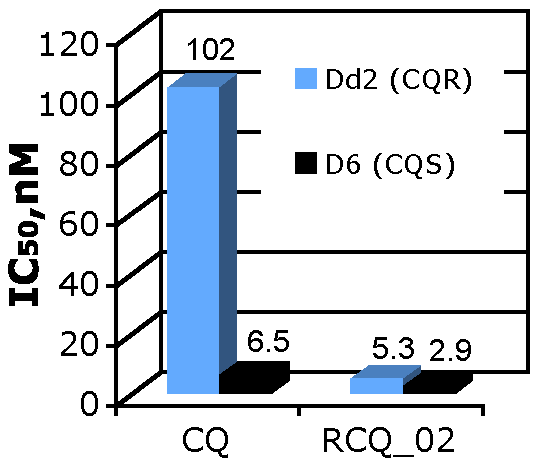David H. Peyton,
Ph.D.
Professor of Chemistry
Portland State University
eMail: peytond@pdx.edu

Other Appointments:
|
Ph.D. |
1983 |
|
|
Postdoctoral |
1983
- 1985 |
|
|
Postdoctoral |
1985
- 1987 |
|
|
Visiting
Scholar |
2000 |
|
|
Visiting
Professor |
2004 |
What are others saying about
us?
Teaching:
PSU uses D2L for classes;
login from https://d2l.pdx.edu/
Research:
Medicinal Chemistry
Biophysical Chemistry
The main
research theme in the Peyton research group is the study of
the relation of structure to function in biological molecules
by application of nuclear magnetic resonance spectroscopy.
However, other tools may be used, depending on the nature of a
particular problem. These tools include organic synthesis,
electronic spectroscopy, and computer modeling/dynamics.
The
following is a ‘gallery’ of some of the specific projects that
are currently being investigated. Some of these projects are
fairly mature, while others are just getting started.
|
Reversed Chloroquines as
Antimalarial Agents |
Chloroquine (CQ) is one
of the safest and most effective drugs ever
developed, but resistance has emerged against it. We
have developed a way to modify CQ to circumvent this
problem. |
|
|
Antimalarial
drug
design: This
is being done in collaboration with Michael
Riscoe, of the Portland VA
Hospital. |
Xanthones
bind
to heme, making them potential agents against
parasites causing diseases, including malaria and
leishmaniasis. |
|
|
Collagen This
is being done in collaboration with Hans
Peter Bächinger, of the Portland
Shriners
Hospital. |
After
so many years as a textbook case, we still don’t
really know the canonical reasons for the stability
of collagen, our most abundant protein. We are
particularly interested in glycosylated collagens,
lacking hydroxyproline. |
|
|
Nicotine
in
cigarette smoke This
is being done in collabaration with Jim
Pankow, of the Oregon
Graduate Institute/OH&SU. |
The
amount and the protonation state of nicotine in
cigarette smoke are key factors in both traditional
and ‘reduced harm’ cigarettes. NMR provides a way to
assess these quantities. |
|
Selected
& Recent Publications:
Synthesis, Structure-Activity Relationship,
& Mode-of-Action Studies of Antimalarial Reversed
Chloroquine Compounds
Burgess, S.J., Kelly, J.X., Shomloo, S., Wittlin, S., Brun, R.,
Liebmann, K., & Peyton, D.H. (2010) J. Med. Chem., 53,
6477-6489
Reversal Agent and Linker Variants of Reversed Chloroquines:
Activities against Plasmodium falciparum
Andrews, S., Burgess, S.J., Skaalrud, D., Kelly, J.X., &
Peyton, D.H. (2010) J. Med. Chem., 53, 916–919
Effect of the
-Gly-3(S)-hydroxyprolyl-4(R)-hydroxyprolyltripeptide unit on the
stability of collagen model peptides
Mizuno, K., Peyton, D.H., Hayashi, T., Engel, J., &
Bächinger, H.P. (2008) FEBS J., 275, 5830-5840
An Expression System to Screen for Inhibitors of Parasite
Glucose Transporters
Landfear, S.M., Feistel, T., Hodson, C.A., & Peyton, D.H.
(2008) Mol. Cell. Parasitol., 162, 71-76
Synthesis and heme-binding correlation with
antimalarial activity of
3,6-bis-(omega-N,N-diethylaminoamyloxy)-4,5-difluoroxanthone
Dodean, R.A., Kelly, J.X., Peyton, D.H., Gard, G.L., Riscoe,
M.K., & Winter, R.W. (2008) Bioorg. Med. Chem. 16, 1174-1183
Tobacco smoke particulate matter chemistry by
NMR
Barsanti K.C., Luo W., Isabelle L.M., Pankow J.F., Peyton D.H.
(2007) Magn. Reson. Chem. 459, 167-170
A Chloroquine-like Molecule Designed to
Reverse Resistance in Plasmodium falciparum
Burgess, S. J.; Selzer, A.; Kelly, J. X.; Smilkstein, M. J.;
Riscoe, M. K.; Peyton, D. H. (2006) J. Med. Chem. 49,
5623-5625
The Peptides
Acetyl-(Gly-3(S)Hyp-4(R)Hyp)10-NH2 and
Acetyl-(Gly-Pro-3(S)Hyp))10-NH2 do not
form a Collagen Triple Helix
K. Mizuno, T, Hayashi, D.H. Peyton, & H.P Bächinger (2004)
J. Biol. Chem., 279, 282-287
The role of carbohydrate in
stabilizing the triple-helix in a model for a deep-sea
hydrothermal vent worm collagen
J.G. Bann, H.P. Bächinger, & D.H. Peyton (2003)
Biochemistry, 42, 4042-4048
Fraction of Free-Base Nicotine
in Fresh Smoke Particular Matter from the Eclipse “Cigarette”
by 1H NMR Spectroscopy
J.F. Pankow, K.C Barsanti, & D.H. Peyton (2003) Chem. Res.
Toxicol., 16, 23-27
Antileishmanial Drug
Development: Exploitation of Parasite Heme Dependency
J.X. Kelly, M.V. Ignatuschenko, R.W. Winter, H.G. Bouwer, D.H.
Peyton, D.J. Hinrichs, & M. Riscoe (2003) Mol. Biochem.
Parasitol., 126, 43-49
A Circularly Permuted
Myoglobin Possesses a Folded Structure and Ligand Binding
Similar to Wild-type Protein but with Reduced Thermodynamic
Stability
A.L. Fishburn, J.R. Keeffe, A.V. Lissounov, D.H. Peyton, &
S.J. Anthony-Cahill (2002) Biochemistry, 41, 13318-13327
The Kinetics of Uptake and
Accumulation of 3,6-w-diethylaminoamyloxyxanthone by the Human
Malaria parasite Plasmodium falciparum
J.X. Kelly, R.W. Winter, A. Cornea, D.H. Peyton, D.J.
Hinrichs, & M. Riscoe (2002) Mol. Biochem. Parasitol.,
123, 47-54
Optimization of Xanthones for
Antimalarial Activity, the 3,6-w-diethylaminoalkoxyxanthone Series
J.X. Kelly, R. Winter, D.H. Peyton, D.J. Hinrichs, & M.K.
Riscoe (2002) Antimicrob. Agts. Chemo., 46, 144-150
Antileishmanial Drug
Development: Exploitation of Parasite Heme Dependency
J.X. Kelly, M.V. Ignatuschchenko, R.W. Winter, H.G. Bouwer,
D.H. Peyton, D.J. Hinrichs, & M. Riscoe (2002) Mol.
Biochem. Parasitol., 123, 47-54



